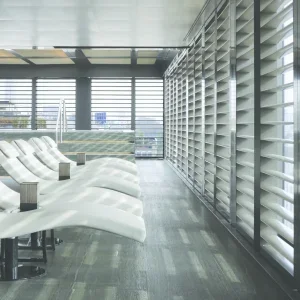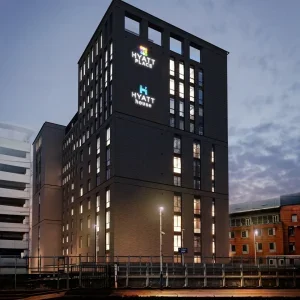 Hoteliers have a lot on their plate right now, particularly independently branded properties, so it’s important for operators to have confidence in their teams to deliver exceptional experiences in an efficient manner. Smaller staff pools, a growing reliance on technology and the increased complexity of that technology have made thorough training an imperative — particularly when it comes to the hotel’s property-management system. Resources are available to help independent hoteliers learn the skills they need to thrive in today’s data-driven environment, but they excel when paired with a strong relationship with technology partners marked by open communication.
Hoteliers have a lot on their plate right now, particularly independently branded properties, so it’s important for operators to have confidence in their teams to deliver exceptional experiences in an efficient manner. Smaller staff pools, a growing reliance on technology and the increased complexity of that technology have made thorough training an imperative — particularly when it comes to the hotel’s property-management system. Resources are available to help independent hoteliers learn the skills they need to thrive in today’s data-driven environment, but they excel when paired with a strong relationship with technology partners marked by open communication.
The first step all independent hoteliers should take to improve their training processes is to ensure all business procedures (typically as standard operating procedures, or SOPs) are in writing, easy to locate, and consistent. It is important for hoteliers to first establish they are using technology that is achieving their goals before investing further in training. This process can take some introspection and open conversations with your technology vendors.
Does your PMS enable you to properly set guest segment configurations? Are operators able to effectively adjust rates? Is it easy to understand what your property’s data analytics imply? Answering these questions will help hoteliers identify areas for improvement and what to focus on. Once a hotel has optimized its on-property technology to fully respond to and take advantage of the current travel market, it’s time to look inward for ways to improve training and efficiency all around.
Play it Again
Repetition is one of the most important elements in employee training. Hospitality flourishes when best practices become good habits, and to reach this point hotels must guide employees using practices and procedures that are up-to-date and consistently followed across all departments.
This process can be assisted by an audit of your hotel’s productivity. Such an exercise can help hotel operators and technology partners connect the dots on capabilities that are being under-utilized — an issue of growing importance as PMS updates continue to roll out over time. With context comes growing interest, and audits like these can help impress the importance of these tools for use in rate management and customer engagement.
Training itself can be delivered in a variety of vehicles. Hands-on instructions are helpful for the initial implementation of a new technology, process or strategy, but there are more efficient ways to reinforce these lessons over a long time. To overcome the logistical challenges that come with onsite training, more companies are delivering training through webinars and other step-by-step guides. These are effective because they can be accessed anytime, anywhere, allowing hotel workers to learn at their own pace or remember key information days or even months later.
Self-training allows hotels to deviate from traditional teaching restrictions, and lessons can also be tracked to ensure employees are engaging with the content. This can be helpful for hotels transitioning to new processes or taking on new tools and takes the core value behind repetition to new heights by making it available at any time.
Keep it Updated
Operators often make the mistake of putting in the work to make sure employees are engaged with training, only to fail to keep their technology up to date. Training tools are only useful if they are referencing the version of the system users have access to. If training information and on-property technology are out of synch, it will inevitably lead to confusion when training new workers and can create inefficiencies contrary to their intended purpose.
Upgrading to the latest version of your hotel’s property management system (PMS) conveys several benefits in addition to maintaining parity with available training information. These include providing access to the latest list of features and platform options, fixes for past deficiencies in the system, and updates for security and internal vulnerabilities.
Even if hotels are keeping up with their PMS update schedule, it’s possible they could be missing out on capabilities that have been added over time. PMS software is naturally complex, and few operators are fully versed in every one of their functions and options. As a result, there are many examples out there of operators seeking to change PMS vendors to take advantage of a supposedly new tool they already have access to in the incumbent providers solution, so it’s always prudent to ask.
Personal Connections
Forming a close working relationship with your technology partner can help mitigate instances of confusion about a PMS’ capabilities. While vendors should be sending hotel partners information alongside each update, operators in the current environment have limited time to parse patch notes every time they hit their inbox. In these cases, it may be necessary for a live-chat interaction or in-person orientation to help operators get back up to speed with the options at their disposal.
Independent properties are facing a unique challenge in this climate. With limited resources, these properties often lack the ability to employ a dedicated technology team and may rely entirely on their technology partners to provide them with the tools and information they need to remain competitive. These properties should consider appointing an internal “champion” (or two) designated as a technology leader. This individual can help communicate with vendors, gather information on new updates, and help train other members of the team over time.
The key to success in this area is communication, whether it comes from a champion or otherwise. Technology partners succeed and fail alongside its hotel partners, and a quality tech vendor will do everything in their power to provide up-to-date information, templates for training, and in-person demonstrations if necessary. Such a relationship, just like all the best parts of hospitality, begins with a conversation.






